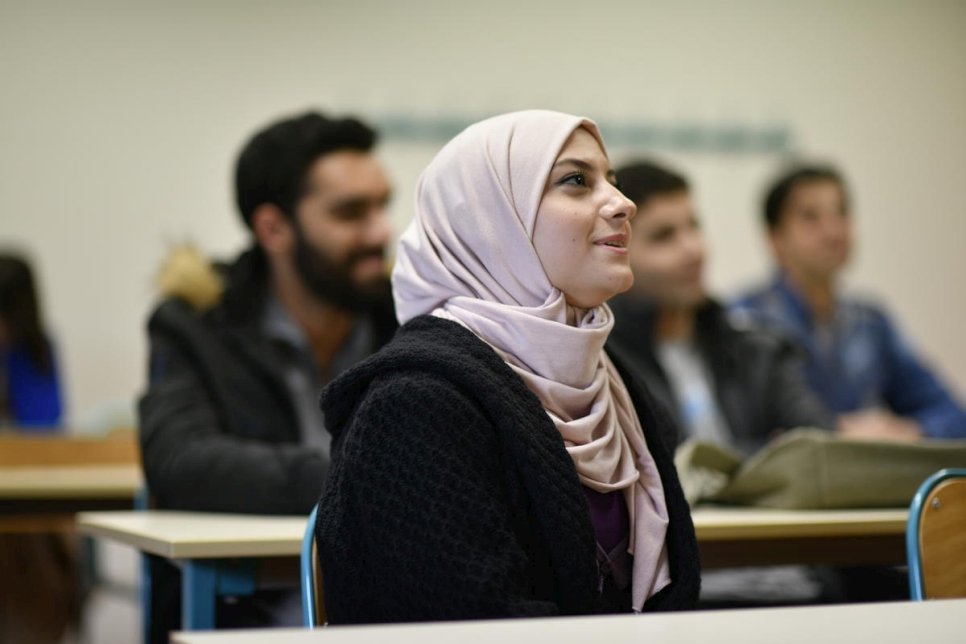Complementary pathways for admission to third countries
Complementary pathways are safe and regulated avenues that complement refugee resettlement and by which refugees may be admitted in a country and have their international protection needs met while they are able to support themselves to potentially reach a sustainable and lasting solution. They do not only offer refugees with alternatives to resorting to irregular means and dangerous onward movement, but they can also facilitate the acquisition and retention of skills that can help refugees attain a sustainable solution in the future.
Complementary pathways are not meant to substitute the protection afforded to refugees under the international protection regime, including through resettlement but rather complement it and serve as an important expression of global solidarity and international cooperation and a contribution to more equitable responsibility sharing.
Complementary pathways must be carefully designed and implemented in such a way that the rights of refugees and continuing international protection needs are safeguarded. UNHCR works with States, civil society, private sector, academia, governmental organizations and refugees to identify, establish and expand complementary pathways for admission to third countries that will meet the continuous international protection needs of refugees.
Complementary pathways for admission may include one or a combination of the following:
- Humanitarian admission programmes, which provides individuals in need of international protection with effective protection in a third country;
- Community sponsorship of refugees, which allows individuals, groups of individuals, or organizations to directly engage in refugee admission efforts by providing financial, emotional, social and/or settlement support to help newly-arrived refugees integrate in a third country;
- Humanitarian visas, which are often used to admit individuals in need of international protection to a third country where they are given the opportunity to formally apply for asylum;
- Family reunification for family members, including those for extended family members;
- Labour mobility schemes, by which a person may enter or stay in another country through safe and regulated avenues for purposes of employment, with the right to either permanent or temporary residence;
- Education programmes, including private and community or institution-based scholarships, traineeships, and apprenticeship programmes;
- Other safe and regulated avenues distinct from those mentioned above may be used to admit refugees to third countries.
A particular feature of complementary pathways is that refugees can access them directly, making use of publically available information and existing administrative mechanisms, and thus securing their own solutions. This is already happening without the help of humanitarian actors. Each year, refugees and people eligible for international protection use existing avenues that are not designed with refugees in mind to move across borders. However, others who could be eligible to do the same are sometimes prevented by legal, administrative and practical barriers.
Complementary pathways should be part of a progressive approach to solutions, with ongoing protection and continuous advancement towards greater enjoyment of legal, civil, political, economic, cultural, and social rights for refugees benefiting from possible opportunities in third countries.
Documents and resources
- UNHCR, Complementary Pathways for Admission to Third Countries – Key Considerations, April 2019 (also available in French, Russian Arabic and Spanish)
- New York Declaration for Refugees and Migrants of 19 September 2016 and its annexed Comprehensive Refugee Response Framework (CRRF)
- The Three-Year Strategy on Resettlement and Complementary Pathways
- Global Compact on Refugees
- UNHCR Written Contribution to the Public Consultation on the European Union's (EU) legislation on the legal migration of non-EU citizens (Fitness Check on EU legal migration legislation), 2017
- UNHCR, Global Responsibility Sharing through Pathways for Admission of Syrian Refugees, March 2016
- Executive Committee of the High Commissioner’s Programme, Conclusion on machine-readable travel documents for refugees and stateless persons, No. 114 (LXVIII) 2017
- Executive Committee of the High Commissioner’s Programme, Conclusion of the Executive Committee on international cooperation from a protection and solutions perspective, No. 112 (LXVII) 2016
- Executive Committee of the High Commissioner’s Programme Standing Committee, 66th meeting, 17 June 2016. UNHCR, New Approaches to solutions (EC/67/SC/CRP.14)
Education
- WUSC, UNHCR and UNESCO, Doubling our Impact, Third Country Higher Education Pathways for Refugees, February 2020
- UNHCR, Higher education consideration for refugees affected by the Syria and Iraqi crisis, May 2015
- Refugee Education 2030: A Strategy for Refugee Inclusion
Family reunification
Labour mobility
- ILO, The access of refugees and other forcibly displaced persons to the labour market, 2016
- ILO recommendation 205, Concerning employment and decent work for peace and resilience, 16 June 2017
Data and evidence
- Safe Pathways for Refugees, UNHCR-OECD Study on third-country solutions for refugees: family reunification, study programmes and labour mobilit (2018 report, 2019 update)

